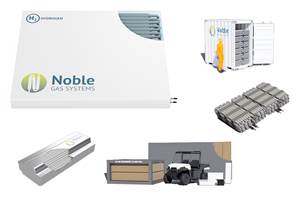Thinking outside the prepreg box in aerospace
A challenge to “outside the box” thinking about prepreg.
Dr. Thomas Tsotsis, technical fellow, materials and process technology at Boeing Research & Technology (Huntington Beach, CA, US), was a keynote speaker at the Society of Plastics Engineers’ (SPE) ANTEC conference in Anaheim, CA, on May 10. Tsotsis’ presentation title was simple: “A path for composites.” It might also have been titled, “My composites wish list.”
Admittedly, the composites manufacturing strategy of a company as big as Boeing cannot be ascribed to one person at Boeing, but Tsotsis’ long experience with aerocomposites gives his words weight, and what he had to say was intriguing.
First, he reviewed the history of prepreg use, noting that it became the preferred material form because it enabled manufacturers to achieve consistent resin/matrix ratios in finished products. Prepregs also have been well qualified and are well supported by material characterization data. He also acknowledged that prepregs are difficult to form into complex shapes, have a limited working life and must be kept frozen when not in use, and require expensive “monument” equipment — ATLs and autoclaves — that tend to become workflow bottlenecks.
Liquid molding, on the other hand, he said, offers fabricators the use of three-dimensional (3D) preforms, braids and weaves (i.e., the material flexibility to meet a greater variety of end-use requirements) eliminates the use of an autoclave and requires no freezer. Downsides? Fiber/resin ratios are more difficult to control with liquid molding, composites made via liquid molding are not as well qualified, and liquid molding processes require additional quality-control steps that prepregs don’t require. Further, he admitted that companies like Boeing have invested millions of dollars in autoclaves, thus their use is, in many ways, imperative.
In short, said Tsotsis, he believes the aerospace industry needs to “get out of the prepreg box” and look more seriously at new chemistries, collaborate to develop reliable design models, increase automation, reduce assembly costs, more proactively address environmental concerns, and more effectively leverage already developed knowledge from other composites end-markets.
From the design side, Tsotsis said he would like to see more innovation in chemistry so that resins can be tailored to designs, rather than having to tailor designs to chemistries, which he believes is the current modus operandi. In addition, he said he would like to see molecular dynamics tools better developed and definitively linked to verifiable test data. And model development, on the whole, he said, is too “siloed” and needs to be addressed more cooperatively and collaboratively with suppliers, OEMs and researchers. Finally, he said, “modeling of strength needs a quantum improvement to be truly useful.”
On the aerocomposites manufacturing floor, Tsotsis said, quality control drives everything, and because of that, process control is paramount. But, unlike the automotive industry, where quality is measured by process consistency, aerospace relies on 100% inspection of finished parts, regardless of process quality. The difference, of course, is the degree of risk involved, and in aerospace, it is assumed there is no room for error.
Tsotsis ended his presentation with a reminder of the value of change, and a desire for a willingness to see technical maturation continue: “Just because we’ve done something that way does not mean it’s the best way.”
Related Content
Noble Gas Systems 350-bar conformable pressure vessels pass HGV2 standard tests
Conformable tanks with new materials pass technical tests for hydrogen storage, to compete with Type IV pressure vessels using CFRP.
Read MoreRead Next
CW’s 2024 Top Shops survey offers new approach to benchmarking
Respondents that complete the survey by April 30, 2024, have the chance to be recognized as an honoree.
Read MoreComposites end markets: Energy (2024)
Composites are used widely in oil/gas, wind and other renewable energy applications. Despite market challenges, growth potential and innovation for composites continue.
Read MoreFrom the CW Archives: The tale of the thermoplastic cryotank
In 2006, guest columnist Bob Hartunian related the story of his efforts two decades prior, while at McDonnell Douglas, to develop a thermoplastic composite crytank for hydrogen storage. He learned a lot of lessons.
Read More























